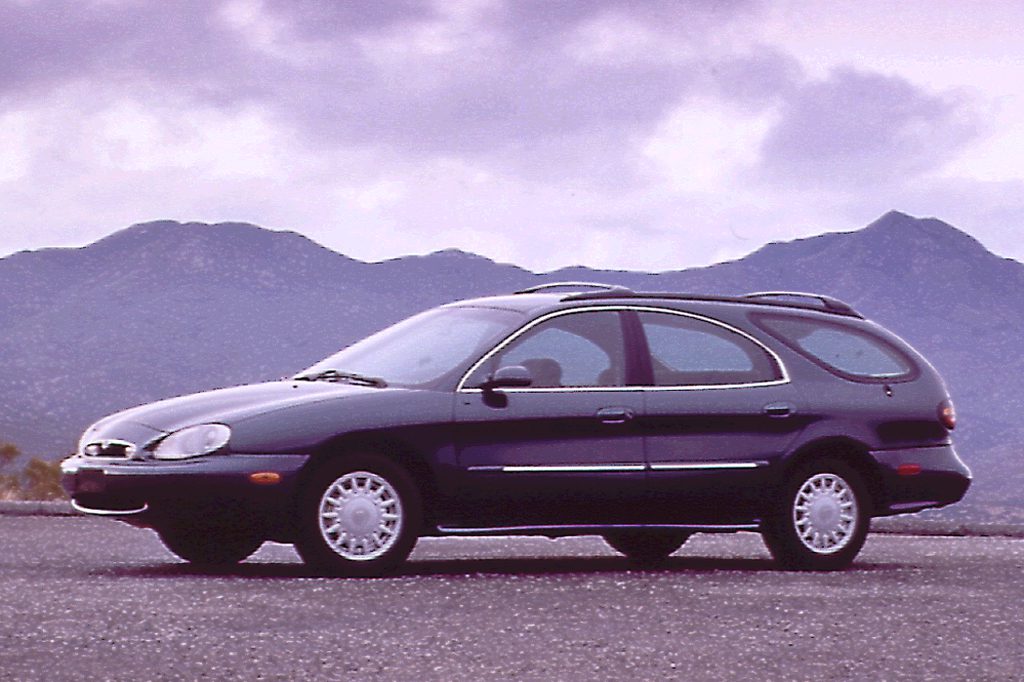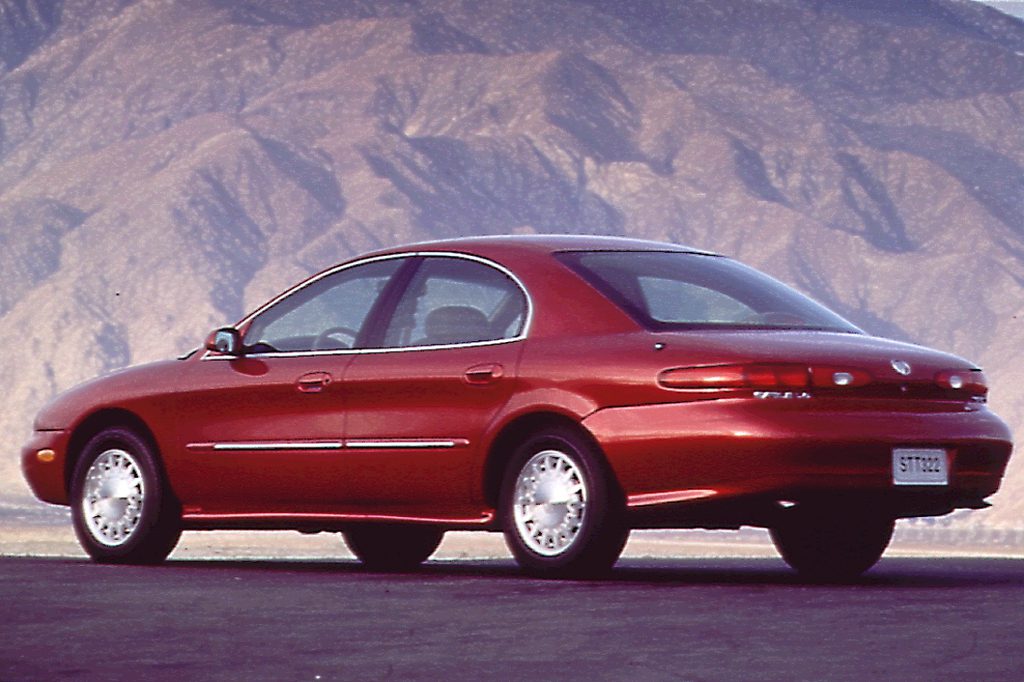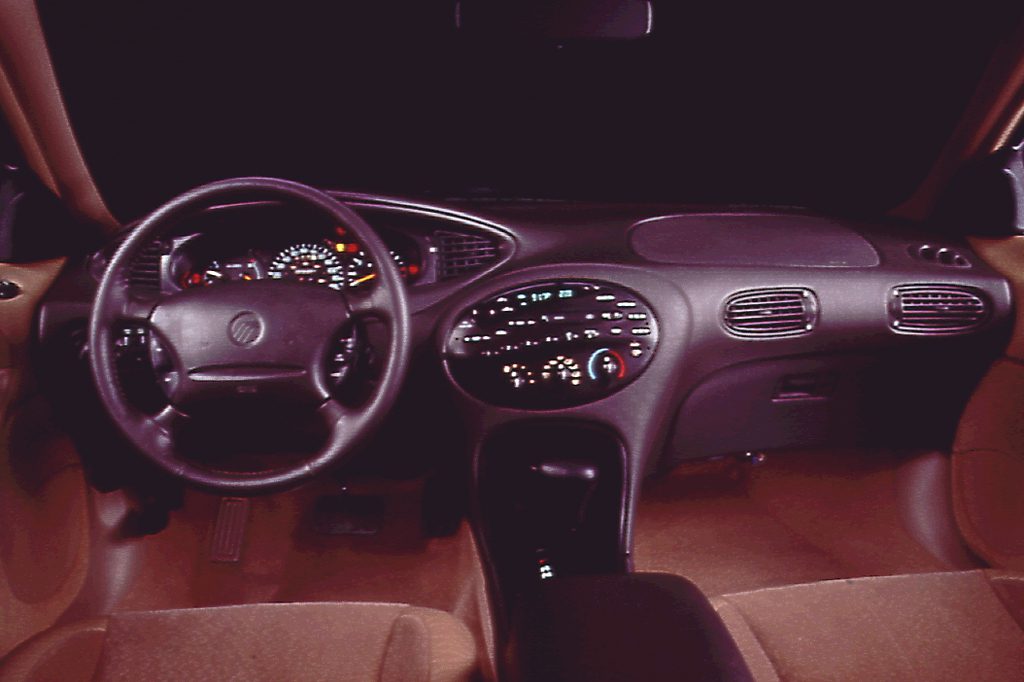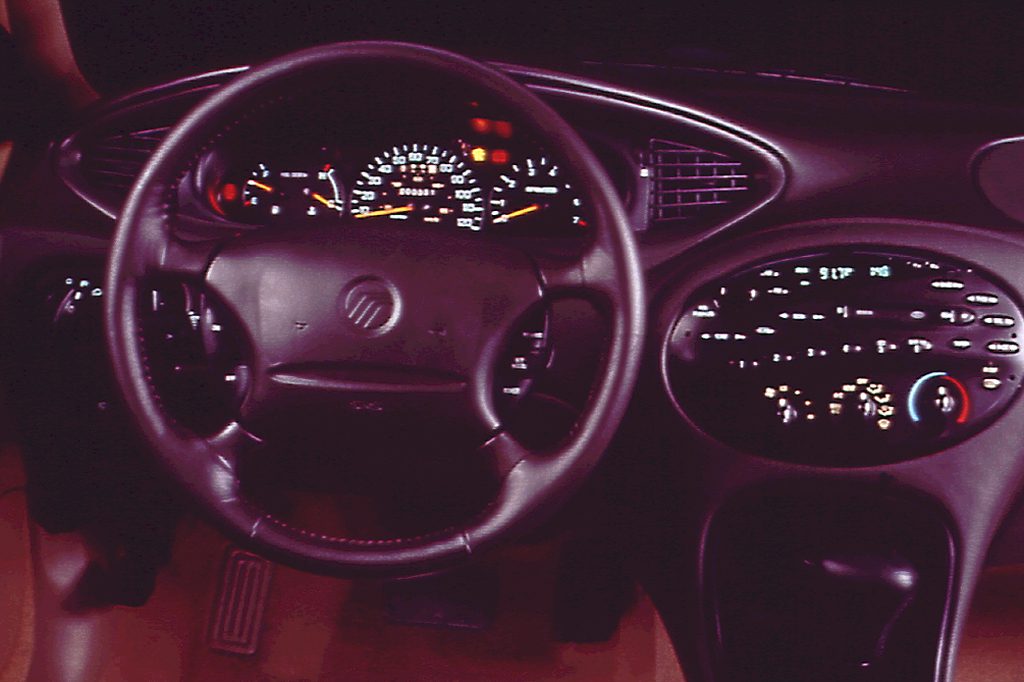| Midsize car; Built in USA |
|
|
| Good condition price range: $1,600 – $2,800* |

1996 Mercury Sable 4-door sedan

1996 Mercury Sable 4-door wagon

1996 Mercury Sable 4-door sedan

1996 Mercury Sable interior

1996 Mercury Sable interior
| Pros: |
|
| Cons: |
|
Showing significant gains in passenger accommodations and performance, the latest Sable is worth a test-drive.
Overview
Fully redesigned like its Ford Taurus sibling, Mercury’s midsize sedan and wagon featured more-rounded contours, greater interior space, plus a new V6 engine with dual-overhead camshafts. Wheelbase grew by 2.5 inches (to 108.5), and the car measured nearly 6 inches longer. Sedans may have seating for five or six. Station wagons came with similar seating choices, holding five to eight–the latter when a 2-place, rear-facing third seat is installed. GS Sables held a 145-horsepower, 3.0-liter overhead-valve V6 engine. The LS carried a 200-horsepower, dual-overhead-cam 3.0 V6. Both engines drove a 4-speed automatic. Dual airbags were standard; antilock brakes optional on all models.
Yearly Updates
| 1997 Sable Only a handful of minor changes marked the 1997 models, led by newly standard front-door map pockets for the GS and LS Sables. |
| 1998 Sable Changes are limited to a new grille and a revised axle ratio for designed to yield better acceleration. |
| 1999 Sable Sable saw price cuts of $1000 to $2000 in ’99, but that had little effect on used car prices. Revisions to the suspension, instrument graphics, and interior door panels rounded out the changes. Sables were redesigned for 2000. |
